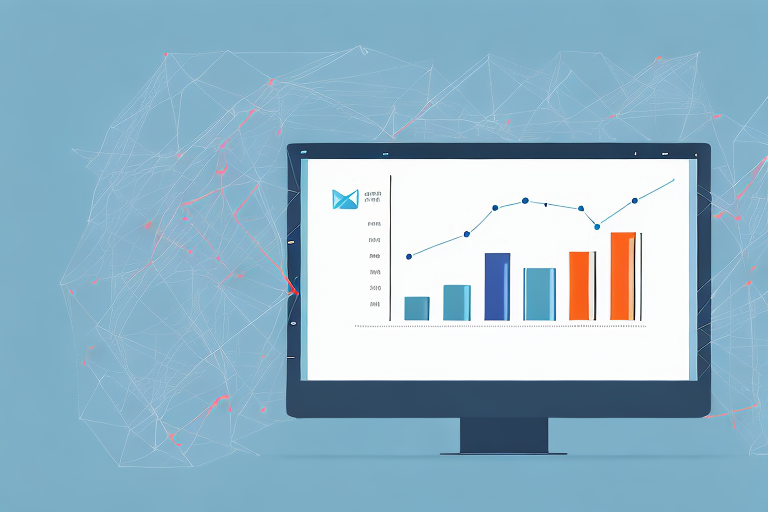Maximizing Your E-commerce Revenue Through A/B Testing
As an e-commerce business owner, one of your primary objectives is to maximize revenue. Achieving this involves implementing a robust marketing strategy, offering high-quality products, and optimizing your website's user experience. A crucial yet often underutilized method to drive revenue growth is through A/B testing.
Understanding the Basics of A/B Testing for E-commerce
A/B testing, also known as split testing, involves creating two versions of a webpage or element to determine which performs better in terms of user engagement, conversions, and revenue. By randomly presenting each version to different segments of your audience, you can gather data-driven insights to enhance your website's effectiveness.
One of the key benefits of A/B testing is its ability to facilitate data-driven decision-making. By systematically testing various elements such as headlines, images, and call-to-action buttons, you can identify which variations yield the highest conversions. This iterative process ensures continuous improvement and optimization of your e-commerce site.
It's important to recognize that A/B testing is an ongoing process rather than a one-time event. Consistently testing and refining your website elements allows you to adapt to changing user behaviors and market trends, ensuring sustained revenue growth.
The Importance of A/B Testing in E-commerce
In the competitive landscape of e-commerce, understanding which factors most significantly impact your success is essential. A/B testing provides tangible data that helps you make informed decisions about various aspects of your website, including design, copy, product placement, and pricing strategies.
For example, a study by Optimizely found that even a 1% increase in conversion rate can lead to substantial revenue growth for large e-commerce sites. By systematically testing and optimizing different elements, businesses can significantly enhance their performance and profitability.
Additionally, A/B testing helps in identifying and resolving potential issues within your website. For instance, if a product page exhibits a high bounce rate, A/B testing can help determine whether the issue lies with the product presentation or the page layout, allowing you to make targeted improvements.
Setting Up an A/B Test for Your E-commerce Store
Identify the Element to Test
Begin by selecting a specific element on your website to test, such as a headline, image, or call-to-action button. Clearly define what you want to achieve with the test, whether it's increasing click-through rates, boosting conversions, or enhancing user engagement.
Define Metrics for Success
Establish the key performance indicators (KPIs) that will measure the success of your A/B test. Common metrics include conversion rate, average order value, and customer lifetime value. For example, if you're testing a new product image, your primary metric might be the number of clicks or conversions associated with that image.
Utilize A/B Testing Tools
Implement your A/B test using specialized software such as Google Optimize or Optimizely. These tools allow you to create and manage different variations of your website easily.
Ensure a Sufficient Sample Size
To achieve statistically significant results, ensure that your test reaches a large enough audience. A small sample size can lead to unreliable conclusions, making it challenging to determine which variation truly performs better.
Monitor and Analyze Results
Regularly track the performance of each variation throughout the testing period. Use analytics tools to monitor changes in your predefined metrics and assess the impact of each variation on your overall goals.
Key Metrics to Measure in A/B Testing for E-commerce
- Conversion Rate: The percentage of visitors who complete a desired action, such as making a purchase.
- Average Order Value (AOV): The average amount spent by customers per transaction.
- Customer Lifetime Value (CLV): The total revenue a business can expect from a single customer account throughout their relationship.
- Bounce Rate: The percentage of visitors who leave your website after viewing only one page.
Tracking these metrics allows you to assess the real impact of your A/B tests on your business's bottom line. For instance, increasing the conversion rate by even a small margin can lead to significant revenue growth over time.
It's also crucial to consider the duration of your A/B tests. Depending on your traffic volume and business objectives, tests may need to run for several weeks to gather sufficient data for accurate analysis.
Analyzing and Interpreting A/B Test Results
After completing your A/B test, the next step is to analyze the results to determine which variation performed better. Begin by checking for statistical significance to ensure that the observed differences are not due to chance. Tools like statistical significance calculators can aid in this analysis.
If one variation clearly outperforms the other, consider implementing the successful change permanently. However, if the results are inconclusive, it may be necessary to conduct further testing with different variables or larger sample sizes.
Remember that A/B testing is an ongoing process. Continuously analyzing and iterating based on test outcomes will help you maintain and improve your e-commerce site's performance over time.
Best Practices for Conducting Effective A/B Testing
Start with Clear Objectives
Define what you aim to achieve with each test. Whether it's increasing the conversion rate or enhancing user engagement, having clear objectives ensures that your tests are focused and meaningful.
Test One Variable at a Time
To accurately identify which change impacts your metrics, limit each A/B test to a single variable. Testing multiple changes simultaneously can obscure the effects of individual elements.
Ensure Sufficient Sample Size
A large enough sample size is essential for achieving statistically significant results. This reduces the margin of error and increases the reliability of your conclusions.
Run Tests for an Adequate Duration
Allow your A/B tests to run for a period that captures sufficient data, accounting for variations in user behavior over different days and times. Typically, tests should run for at least two weeks to account for weekly traffic patterns.
Avoid Common Pitfalls
- Changing Multiple Elements: Testing too many variables at once can lead to ambiguous results.
- Rushing to Conclusions: Prematurely ending tests before reaching statistical significance can result in inaccurate insights.
- Ignoring External Factors: Be mindful of external influences like seasonal trends or marketing campaigns that might affect your test results.
Implementing Successful A/B Tests in Your E-commerce Store
Here are some actionable tips to ensure your A/B tests are effective:
- Start Small: Begin with minor changes that are easy to implement and measure.
- Follow the Scientific Method: Clearly define your hypothesis, make predictions, and test them systematically.
- Use Reliable Tools: Leverage trusted A/B testing platforms like Optimizely or Google Optimize to manage and analyze your tests efficiently.
- Analyze Beyond the Numbers: Consider qualitative feedback from user surveys or heatmaps to gain deeper insights into user behavior.
Using Customer Data to Drive Your A/B Testing Strategy
Your customer data is invaluable in shaping your A/B testing strategy. By analyzing shopping behaviors, you can pinpoint areas of your website that require optimization. For example, if data shows a high cart abandonment rate, you can test different checkout processes to enhance user experience and reduce drop-offs.
Implementing tools like Hotjar or Heatmap.com can provide visual insights into user interactions, allowing you to identify and address pain points effectively.
Common Mistakes to Avoid When Conducting A/B Tests
- Undefined Objectives: Without clear goals, it's challenging to measure the success of your tests.
- Testing Multiple Elements Simultaneously: This can lead to unclear results and make it difficult to identify which change was effective.
- Insufficient Sample Size: Small sample sizes can result in unreliable data and misleading conclusions.
- Short Testing Duration: Running tests for too short a period can fail to account for variability in user behavior.
Avoiding these common pitfalls will help ensure that your A/B tests yield meaningful and actionable insights.
Integrating A/B Testing with Other Marketing Strategies
A/B testing should complement your broader marketing strategies to maximize its effectiveness. For instance, you can integrate A/B testing with email marketing campaigns by testing different email subject lines or content to see which versions drive higher open and click-through rates.
Similarly, combining A/B testing with social media advertising allows you to test various ad creatives and messaging to determine which combinations resonate best with your target audience. This integrated approach ensures a cohesive and data-driven marketing strategy that consistently drives revenue growth.
Advanced Techniques: Multivariate Testing in E-commerce
While A/B testing focuses on comparing two versions of a single element, multivariate testing allows you to test multiple variables simultaneously. This approach helps in understanding how different elements interact with each other and their combined effect on user behavior.
Advanced techniques such as factorial designs and fractional factorial designs can optimize the testing process by reducing the number of required test combinations without sacrificing accuracy. However, multivariate testing requires more substantial traffic and resources to achieve statistically significant results.
Tools like Optimizely and VWO offer robust support for multivariate testing, enabling e-commerce businesses to delve deeper into user experience optimization.
Using Heatmaps and Other Tools to Optimize Your A/B Test Performance
Heatmaps are a powerful tool for visualizing user interactions on your website. By displaying areas of high and low engagement, heatmaps help you identify which parts of your pages attract the most attention and which areas may need improvement.
Additional tools like scroll maps and click maps provide further insights into user behavior, such as how far users scroll down a page or where they click most frequently. These insights can inform your A/B testing strategy by highlighting elements that may benefit from optimization.
Implementing tools like Hotjar or Heatmap.com can enhance your understanding of user behavior, allowing you to create more targeted and effective A/B tests.
Case Studies: Real-Life Examples of Successful A/B Tests in E-commerce
Examining real-life case studies can provide valuable insights into the practical application of A/B testing and its impact on e-commerce performance.
- Button Color Optimization: An online retailer changed the color of their "Buy Now" button from blue to green, resulting in a 15% increase in click-through rates and a subsequent boost in conversions.
- Product Page Layout: A fashion e-commerce site tested different product page layouts. Placing product recommendations above the fold led to a 25% increase in cross-selling and a 30% rise in average order value.
- Checkout Process Simplification: Simplifying the checkout process by reducing the number of required fields decreased cart abandonment rates by 20% and increased completed purchases by 18%.
These case studies demonstrate the significant impact that well-executed A/B tests can have on various aspects of an e-commerce business, from user engagement to overall revenue.
Future Trends and Innovations in A/B Testing for E-commerce
The landscape of A/B testing is continually evolving, with several emerging trends poised to enhance its effectiveness in e-commerce:
- Artificial Intelligence and Machine Learning: AI-driven A/B testing tools can analyze vast amounts of data to identify optimal variations more quickly and accurately than traditional methods.
- Personalization: Advanced A/B testing techniques are enabling highly personalized user experiences by tailoring content and offers based on individual user behavior and preferences.
- Integration with Omnichannel Strategies: A/B testing is expanding beyond websites to encompass various digital touchpoints, including mobile apps, email marketing, and social media platforms.
- Enhanced Analytics: Future developments in analytics will provide deeper insights into user behavior, enabling more sophisticated testing and optimization strategies.
Staying abreast of these trends and incorporating innovative A/B testing techniques into your e-commerce strategy will ensure that your business remains competitive and continues to maximize revenue growth.






















